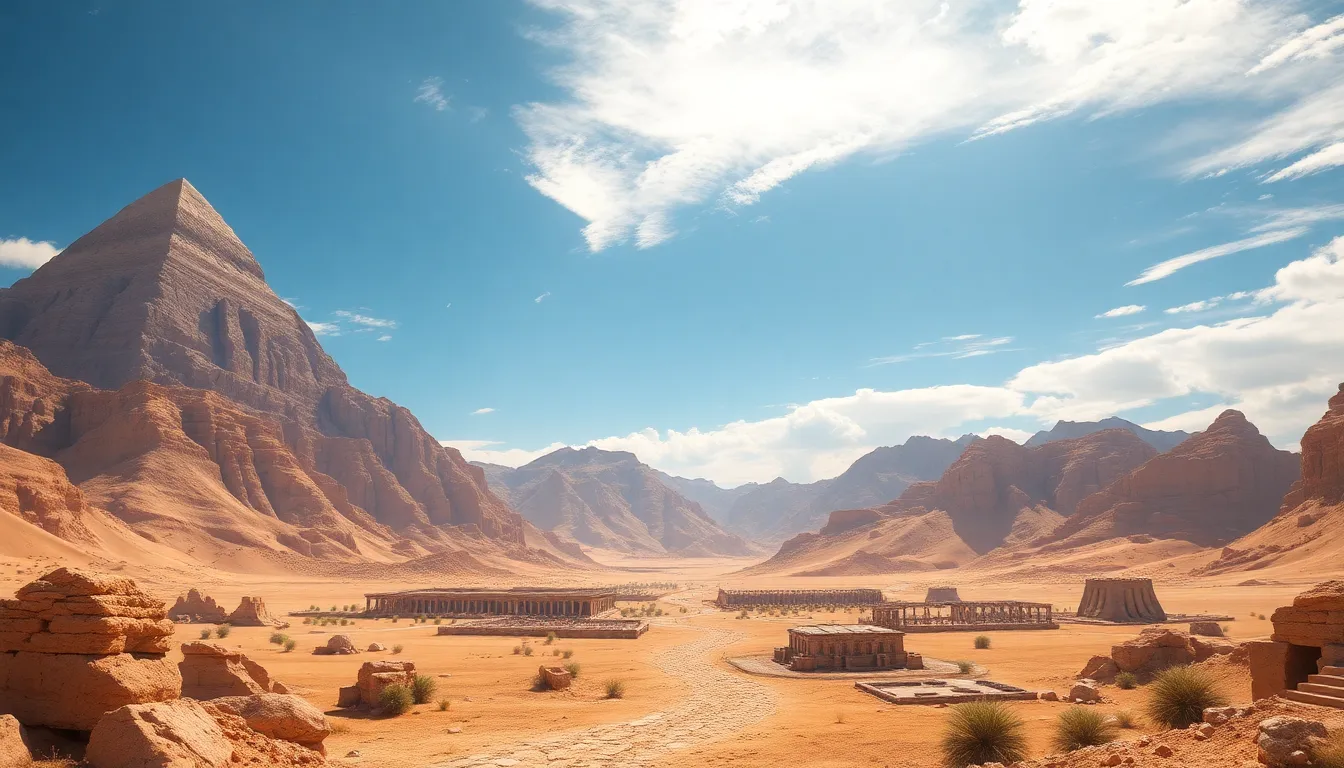The Sacred Mountains: Where Egyptian Gods Found Refuge
I. Introduction
The ancient Egyptians had a profound connection to their landscape, particularly the mountains that dotted their terrain. In Egyptian mythology, mountains were not just natural formations; they were considered sacred spaces where gods found refuge and where divine interactions with humanity occurred. This article aims to explore the significance of these sacred mountains and their associations with Egyptian deities, shedding light on how geography influenced the spiritual beliefs of one of history’s most fascinating civilizations.
II. The Role of Geography in Egyptian Mythology
Egypt is characterized by its unique geography, including the vast deserts, the life-giving Nile River, and the notable mountain ranges that rise dramatically from the surrounding plains. The mountains played a crucial role in shaping the ancient Egyptians’ worldview and religious beliefs.
- Jebel Barkal: Located in Nubia, this mountain was considered a sacred site, believed to be the dwelling place of the god Amun.
- Mount Sinai: Although more widely recognized in Judeo-Christian traditions, this mountain also holds significance in Egyptian mythology.
- The Eastern Desert Mountains: This range was often associated with the sun god Ra and served as a barrier between the fertile Nile valley and the chaotic desert.
The mountains not only provided a physical backdrop for religious practices but also influenced the mythology itself, as gods were often depicted as residing in or emerging from these towering landscapes.
III. The Sacred Mountains of Egypt
Several mountains in Egypt are regarded as sacred due to their historical and cultural significance.
- Jebel Barkal: Known as the “Mountain of God,” it was revered as the birthplace of the god Amun and served as a major religious center in ancient Nubia.
- Mount Sinai: While primarily linked to biblical narratives, it also had connections to Egyptian deities, believed to be a meeting place for gods and humans.
- Mount Qattara: This mountain is less well-known but played a role in local myths and was associated with the afterlife.
These mountains were not just geographical features; they were integral to the identity and beliefs of the people, serving as pilgrimage sites and centers for worship.
IV. Egyptian Gods and Their Associations with Mountains
Certain deities in Egyptian mythology are closely tied to specific mountains, creating a rich tapestry of stories and connections.
- Amun: This chief deity was associated with Jebel Barkal, where he was believed to reside and where many temples were constructed in his honor.
- Horus: Often linked to the mountains of Upper Egypt, where his myths of avenging his father Osiris took place.
- Ra: The sun god, who was thought to rise from the mountains each morning, symbolizing rebirth and renewal.
Myths often depicted these gods interacting with the mountains, such as Amun emerging from the mountain to bless his followers or Ra traveling through the heavens from his mountain abode.
V. Rituals and Worship at the Sacred Mountains
The sacred mountains of Egypt were centers for various rituals and ceremonies, reflecting the deep reverence the ancient Egyptians held for these natural wonders.
- Pilgrimages: Devotees would travel to sacred mountains to seek the favor of the gods, often making offerings and prayers.
- Festivals: Seasonal festivals were held in honor of the gods where people would gather at mountain sites to celebrate, dance, and perform rituals.
- Ritual Sacrifices: Some mountains served as locations for sacrifices, believed to appease the gods and ensure prosperity.
The mountains were not just backdrops for these activities; they were seen as living entities imbued with divine presence, amplifying the spiritual experience of worship.
VI. Artistic Representations of Sacred Mountains
Art and architecture in ancient Egypt often reflected the significance of mountains, showcasing their divine associations through various forms of expression.
- Temples: Many temples were built at the base of sacred mountains, featuring carvings and inscriptions that honored the gods.
- Paintings: Wall paintings depicted scenes of gods interacting with mountains, showcasing their importance in mythological narratives.
- Sculptures: Statues of deities were often placed on mountain summits or in temple precincts, symbolizing their dominion over these sacred spaces.
Symbolism related to mountains in Egyptian art often included motifs of strength, stability, and eternity, reflecting the mountains’ role as a cosmic axis connecting the earth with the heavens.
VII. The Legacy of Sacred Mountains in Modern Egypt
The influence of ancient beliefs surrounding the sacred mountains continues to resonate in modern Egypt, shaping cultural practices and societal values.
- Cultural Practices: Many contemporary festivals and rituals echo ancient traditions, celebrating the connection to the land and its sacred sites.
- Preservation Efforts: There is a growing awareness and effort to protect sacred sites, ensuring their continued reverence and historical significance.
Modern Egyptians often look to their ancient heritage for inspiration, reinforcing the mountains’ status as symbols of national identity and cultural continuity.
VIII. Conclusion
The sacred mountains of Egypt are more than just geological formations; they are integral to the mythology, spirituality, and cultural identity of the ancient Egyptians. Their significance has transcended time, influencing contemporary practices and preserving a connection to the divine. As we reflect on the legacy of these sacred spaces, we recognize their lasting impact on the cultural heritage of Egypt and the enduring fascination with the gods who once roamed their heights.




